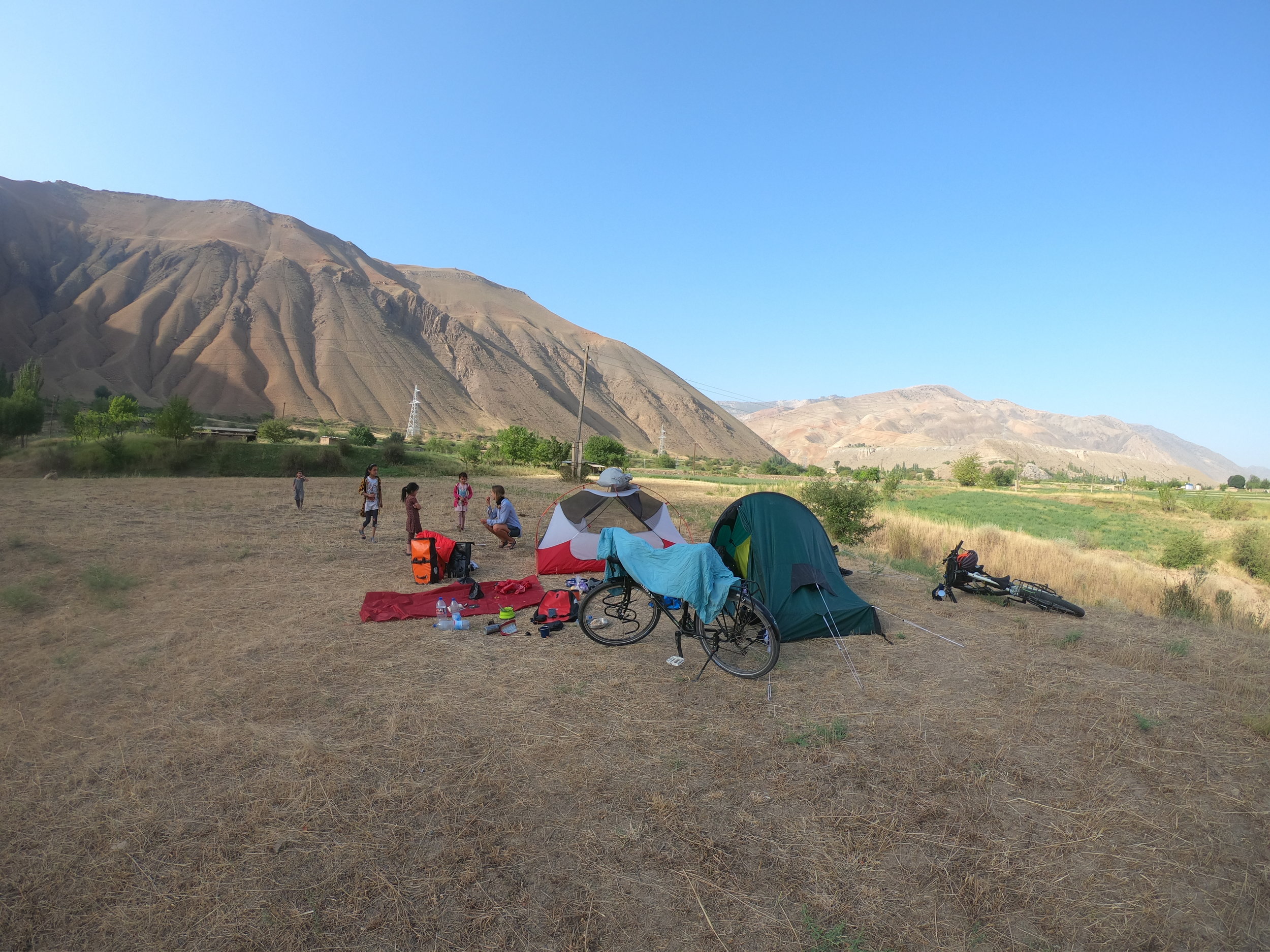Dusk was just falling when we first laid eyes on Afghanistan.
My eyes desperately tried to drink in the gargantuan landscape, the road we were flying down felt like a shelf leaning over into a kilometres-wide valley threaded with the wild Panj River.
We’d weaved through several herds of goats before entering what felt like a dreamscape, either side of the road flanked by towers of red rock, a landscape so unlike anything I’ve seen in geological formation and size.
Doesn’t do the magic of the landscape justice but these mountains will stay in my memory forever
The red towers became vast mountains which you’ll have to imagine because I couldn’t stop to retrieve my camera, we had less than 20 minutes of light left to find our campsite.
The brand new sealed road - it must have been a terrifying ordeal previously - zig zagged down the face of the mountain to a grassy bluff where we planned to camp.
The lights of villages in Afghanistan glittered on the mountainsides in the distance, and I felt surprised at how much civilisation there is in this far-flung corner of the wartorn country.
Earlier that day we’d left the town of Kulob and ground our way up 1350m of rutted, gravelly road.
Temperatures were again pushing 40 degrees and the climb was arduous.
Something that’s perplexed me is how other bike tourers carry enough water to prevent themselves from shriveling up in this heat.
Even after guzzling half a bottle my mouth is sandpapery within 500m.
Our solution has been to carry four 1.5L bottles each, perilously tied on with bungy cords which are wont to come hurtling off the back when descending a hill at speed.
Cooling down is impossible when our water is the temperature of a nice hot cup of tea.
A truck carrying a tall stack of hay passed us with wave, and five minutes later we saw it pulled over, wisps of smoke curling from its cargo.
In minutes the hay was fully engulfed in flames and everyone standing around helplessly. There is no water around.
I felt somewhat justified in my perpetual thirst that the heat is enough to make hay spontaneously combust.
We spent the night camped with a French solo cyclist who bought her bike in Invercargill for $200NZD, then rode it to Cape Reinga. Since then she’s done 30,000km of solo bicycle touring.
She tells of unwanted attention from men despite covering her entire body. She’s had men ask her outright for sex in both Mongolia and the US - sexual harassment is not confined to any culture.
The subsequent days were spent hugging the Panj River, a ferocious grey torrent that acts as a border with Afghanistan. So high are the gorges that we can barely see the mountaintops above when craning our heads back.
Villages with lush green gardens are scattered along the Afghanistan riverbank, and we spy tiny tracks that weave their way up high into the mountains and wonder where they lead. Cultivating opium poppies is the only real source of income for people in this area, so we ponder whether these paths lead to hidden crops.
We camped again on a grassy bank next to the river, waving distance from the Afghans who rode past on motorbikes, responding with a slight nod or touch of the hand to their chest.
There’s a strong military presence on the Tajik side of the river, each day we pass groups of three soldiers on patrol, 100m apart and with AK47s slung over their shoulders.
We pause to fill our water bottles at a stream and a soldier approaches, holding up his arms in a cross and pointing to the other side of the bridge. We understand - it’s safe to gather water on this side but on the other there are landmines. Despite this, and the proximity to the country ravaged by conflict since the 1970s and synonymous with danger, we feel safe, our campsites peaceful.
The only tangible danger are the rocky cliffs we’re cycling beneath. Signs of recent landslides are frequent and the mountains, despite their enormity, seem to be constantly crumbling.
A man stopped us in a village called Jak - delighted that Jack shares the name of his home - and brings a bag of enormous, fresh juicy figs whose bright green skin gives way to sweet, red flesh.
The roads are lined with pomegranate trees dangling not-quite-ripe fruit, as well as heavily laden apple and walnut trees.
The novelty of high fiving kids has begun to wear thin, particularly when we hit our high speed of 61km/h and a gaggle of young people scattered across the road extending their hands - a 61km/h high five hurts!
We arrived in the alpine hamlet of Kalaikhum and the last remnants of internet before Khorog - the capital of the Pamirs.
With 3500m elevation we expect to arrive there in five days. See you then!

















































